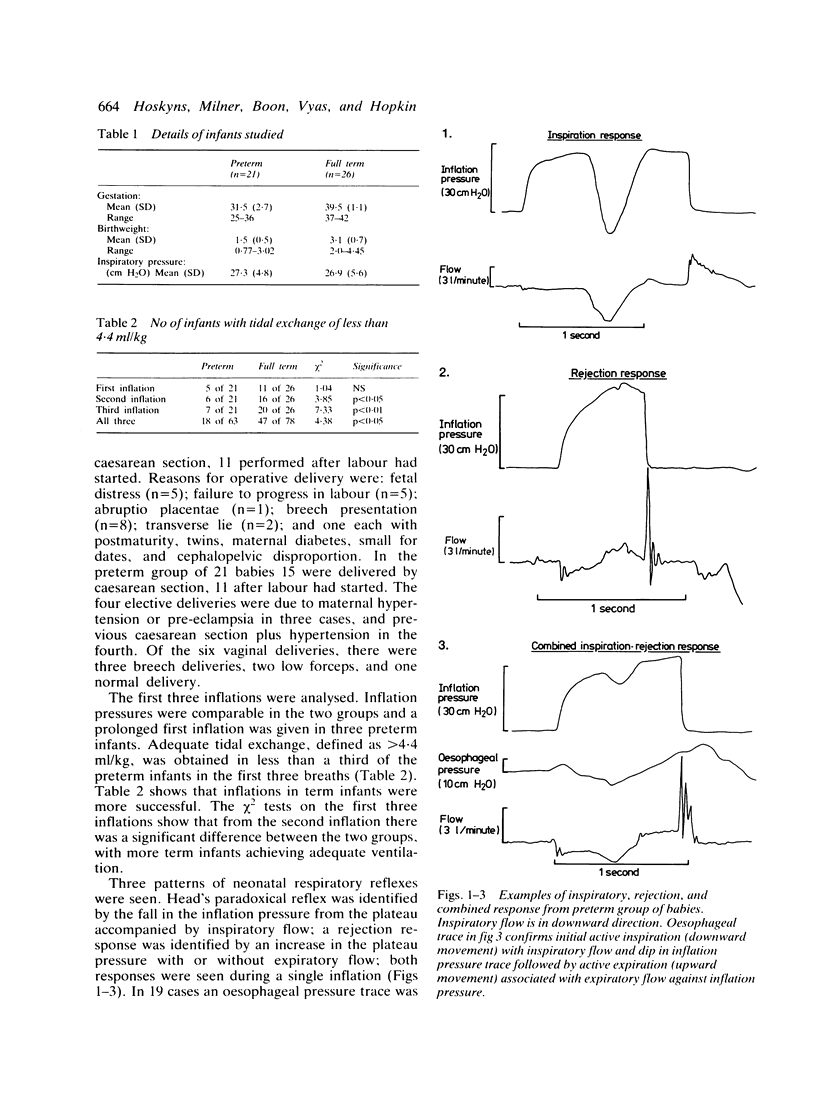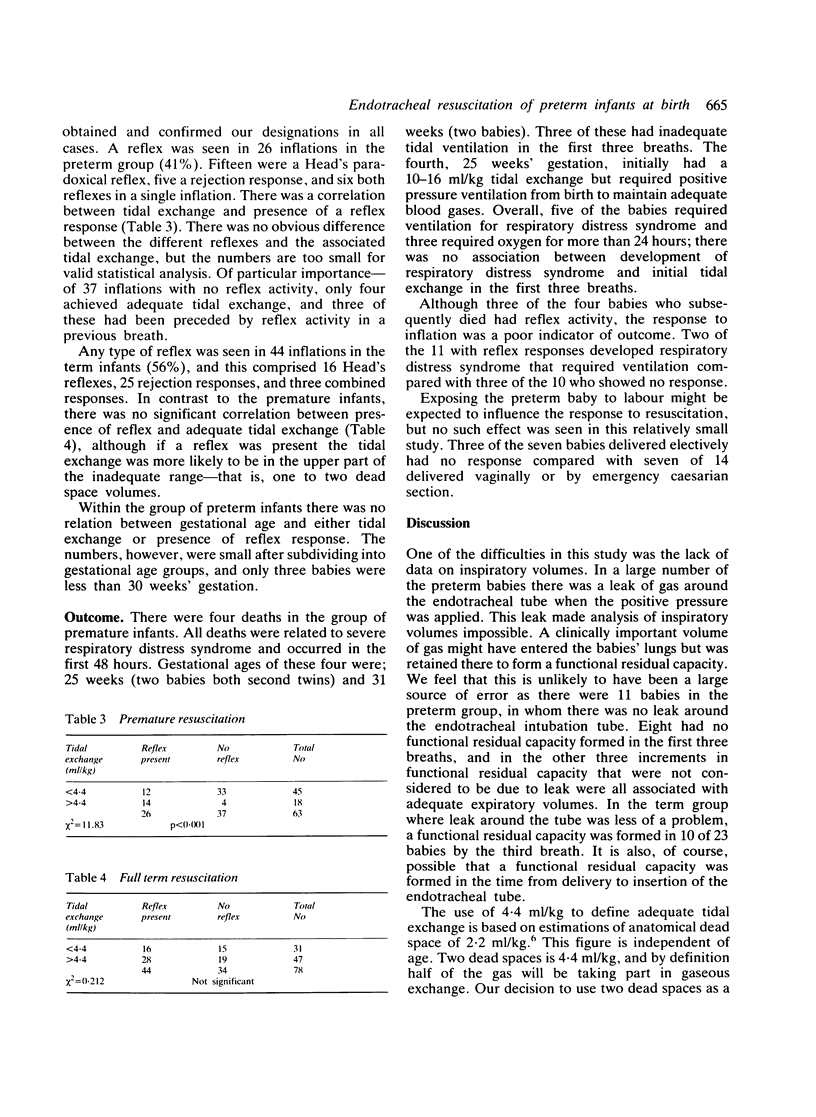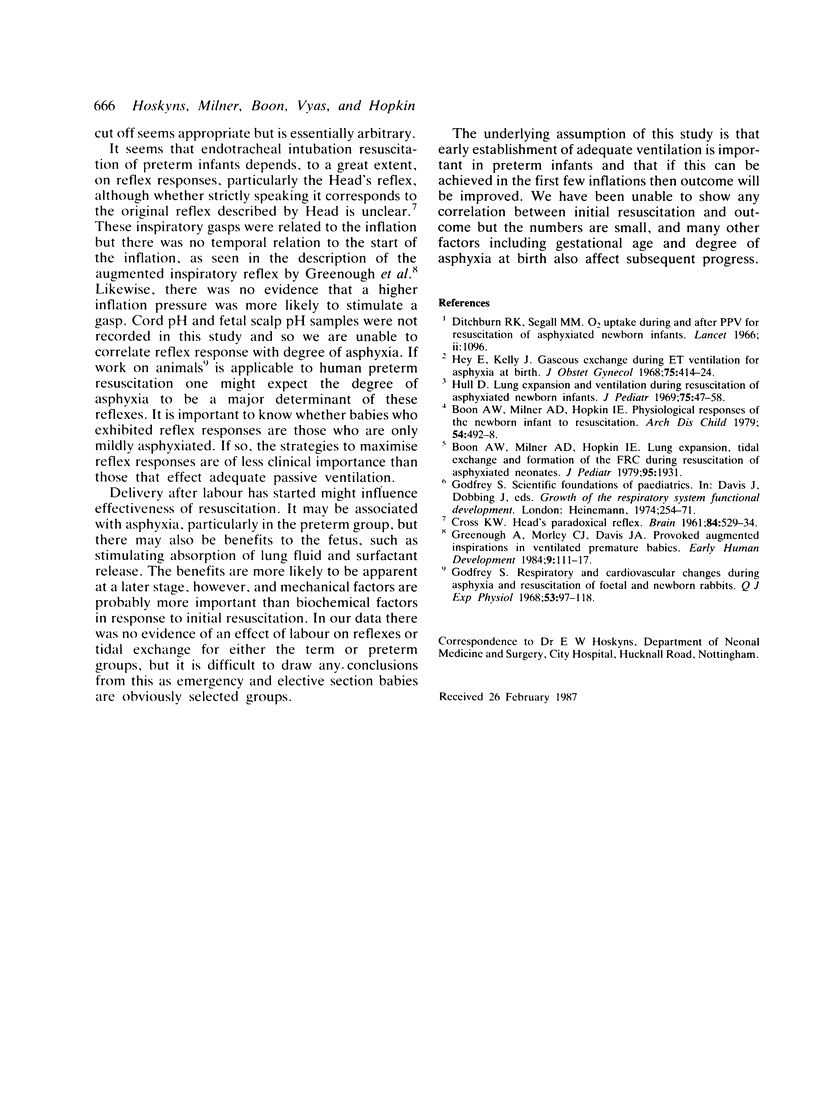Abstract
The adequacy of initial ventilation in 21 preterm babies (25-36 weeks' gestation), who required endotracheal intubation and positive pressure ventilation, were studied. Pressure and flow were measured at the proximal end of the endotracheal intubation tube and expiratory volume calculated from the flow trace. The results were compared with those from a group of 26 term infants who also required resuscitation. Five of 21 preterm babies (24%) had adequate tidal ventilation with the first inflation. This rose to seven of 21 (33%) by the third inflation. This was significantly less than the results in the term infants (chi 2 = 4.38 p less than 0.05). Respiratory reflex responses to resuscitation were seen in 41% of inflations in preterm and 56% of inflations in term infants. There was a significant correlation between reflex activity and adequate ventilation in the preterm group (chi 2 = 11.83, p less than 0.001) but not in the term group (chi 2 = 0.212, p = NS). No correlation was seen between initial ventilation and outcome.
Full text
PDF



Selected References
These references are in PubMed. This may not be the complete list of references from this article.
- Boon A. W., Milner A. D., Hopkin I. E. Physiological responses of the newborn infant to resuscitation. Arch Dis Child. 1979 Jul;54(7):492–498. doi: 10.1136/adc.54.7.492. [DOI] [PMC free article] [PubMed] [Google Scholar]
- CROSS K. W. Head's paradoxical reflex. Brain. 1961 Dec;84:529–534. doi: 10.1093/brain/84.4.529. [DOI] [PubMed] [Google Scholar]
- Ditchburn R. K., Hull D., Segall M. M. Oxygen uptake during and after positive-pressure ventilation for the resuscitation of asphyxiated newborn infants. Lancet. 1966 Nov 19;2(7473):1096–1099. doi: 10.1016/s0140-6736(66)92192-1. [DOI] [PubMed] [Google Scholar]
- Godfrey S. Respiratory and cardiovascular changes during asphyxia and resuscitation of foetal and newborn rabbits. Q J Exp Physiol Cogn Med Sci. 1968 Apr;53(2):97–118. doi: 10.1113/expphysiol.1968.sp001965. [DOI] [PubMed] [Google Scholar]
- Greenough A., Morley C. J., Davis J. A. Provoked augmented inspirations in ventilated premature babies. Early Hum Dev. 1984 Feb;9(2):111–117. doi: 10.1016/0378-3782(84)90091-4. [DOI] [PubMed] [Google Scholar]
- Hey E., Kelly J. Gaseous exchange during endotracheal ventilation for asphyxia at birth. J Obstet Gynaecol Br Commonw. 1968 Apr;75(4):414–424. doi: 10.1111/j.1471-0528.1968.tb00138.x. [DOI] [PubMed] [Google Scholar]
- Hull D. Lung expansion and ventilation during resuscitation of asphyxiated newborn infants. J Pediatr. 1969 Jul;75(1):47–58. doi: 10.1016/s0022-3476(69)80100-9. [DOI] [PubMed] [Google Scholar]


